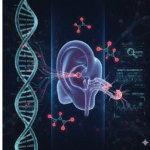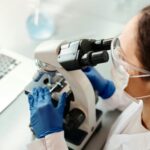Heart disease remains one of the leading causes of death worldwide, with millions of individuals suffering from conditions like heart attacks and heart health failure. Despite the best efforts of medical science, repairing the damage caused by these conditions has remained an elusive goal. However, a groundbreaking study by Cedars-Sinai Medical Center in Los Angeles could offer a new hope for patients with heart damage, utilizing an innovative approach to cell therapy that accelerates the healing process.
The Cedars-Sinai Study
The recent study conducted by Cedars-Sinai offers promising results in the field of regenerative medicine. Researchers have focused on the use of cell therapy to heal the heart healthfollowing damage caused by myocardial infarction (heart attacks), a condition that leads to the death of heart muscle cells. Traditionally, once heart tissue is damaged or dies, it cannot regenerate, leading to decreased heart function, long-term complications, and the eventual risk of heart failure. This study, however, shows how cells can be harnessed to rapidly repair heart tissue, offering a potential breakthrough in cardiac care.
The research involved injecting specialized heart cells into damaged cardiac tissue, showing that these cells can promote rapid healing and even restore heart function to a significant degree. By using cutting-edge stem cell technology and tissue engineering techniques, the study was able to demonstrate that heart cells, when properly administered, could stimulate the regeneration of damaged tissues and improve overall heart function.
Methodology: Harnessing the health Power of Stem Cells

The study was led by renowned researchers at Cedars-Sinai, who focused on a particular type of cell known as cardiomyocytes—the muscle cells that make up the heart. The team utilized induced pluripotent stem cells (iPSCs), which are unique because they can be reprogrammed to develop into a variety of cell types, including cardiomyocytes. By transforming these iPSCs into heart muscle cells in the laboratory, the researchers created a potential solution for regenerating damaged tissue.
The cells were carefully cultured and prepared in a controlled environment before being injected into the hearts of animal models with heart health damage. The researchers closely monitored the animals to assess how well the cells integrated into the damaged heart tissue and how effectively they restored function. The results were nothing short of extraordinary. Within a short period, the cells began to repair the damaged cardiac tissue, stimulate the formation of new blood vessels, and even restore electrical function in the heart. In many cases, the hearts of the animals showed significant improvement in pumping efficiency, with a marked reduction in the risk of heart failure.
Key Findings and Results
The Cedars-Sinai study yielded several important findings that could revolutionize the way we treat heart health disease:
- Rapid Healing of Heart Muscle: One of the most notable outcomes of the study was the speed at which heart tissue began to regenerate. Unlike previous methods that required prolonged treatment or extensive rehabilitation, the cell therapy led to rapid healing of the damaged heart muscle within weeks.
- Restoration of Heart Function: The injection of cardiomyocytes not only repaired tissue but also improved the overall function of the heart. Tests revealed that the hearts of the animal models had an increased ability to pump blood, reducing the severity of heart failure symptoms.
- Formation of New Blood Vessels: Another key finding was the ability of the injected cells to stimulate angiogenesis—the formation of new blood vessels in the heart. This is critical because heart damage often results in poor blood flow to affected areas. By enhancing blood vessel formation, the cell therapy improves oxygen and nutrient delivery, further accelerating the healing process.
- Reduction in Scar Tissue: After a heart attack, scar tissue often forms where muscle cells health have died, which can impair heart function. The Cedars-Sinai team found that the injected cells were able to reduce the formation of scar tissue, allowing the heart to recover more effectively and maintain better structural integrity.
- Long-Term Benefits: Importantly, the effects of the cell therapy appeared to be long-lasting. Follow-up studies revealed that the therapeutic benefits continued for months after the initial treatment, suggesting that the cells provided a lasting solution for heart regeneration.
The Implications for Human Patients

While the Cedars-Sinai study has so far been conducted using animal models, the results are a step closer to human application. Translating these findings to human patients will require careful clinical trials, but the potential impact is immense. For patients suffering from chronic heart conditions or those recovering from a heart attack, this treatment could offer a new avenue for recovery.
If the therapy proves effective in humans, it could eliminate or significantly reduce the need for heart transplants or other invasive procedures. The ability to repair heart muscle without surgery would be a game-changer, offering a safer, less costly, and less invasive alternative to current treatments. Additionally, the ability to regenerate tissue could lead to more effective treatments for a range of heart conditions, from ischemic heart disease to congenital heart defects.
Challenges and Future Directions
Despite the promising results, several challenges remain before this therapy can be widely used in clinical practice. One of the major hurdles is ensuring that the transplanted cells integrate properly into human tissue without triggering an immune response. Researchers will also need to optimize the method of delivering the cells to ensure that they reach the damaged areas and function as intended.
Furthermore, long-term studies will be needed to fully understand the durability and safety of health treatment. There is a need for ongoing research to identify the most effective types of cells and delivery methods, as well as to understand the potential side effects or complications associated with cell-based therapies.
Conclusion
The Cedars-Sinai study marks a significant breakthrough in the field of regenerative medicine and cardiac care. By demonstrating that cell therapy can rapidly heal heart damage, this research brings us one step closer to finding a viable solution for heart disease patients. While much work remains to be done before this treatment becomes a mainstream option, the promise of regenerating damaged heart tissue offers hope for millions of people living with heart disease. With continued research and clinical trials, the future of heart disease treatment looks brighter than ever.





